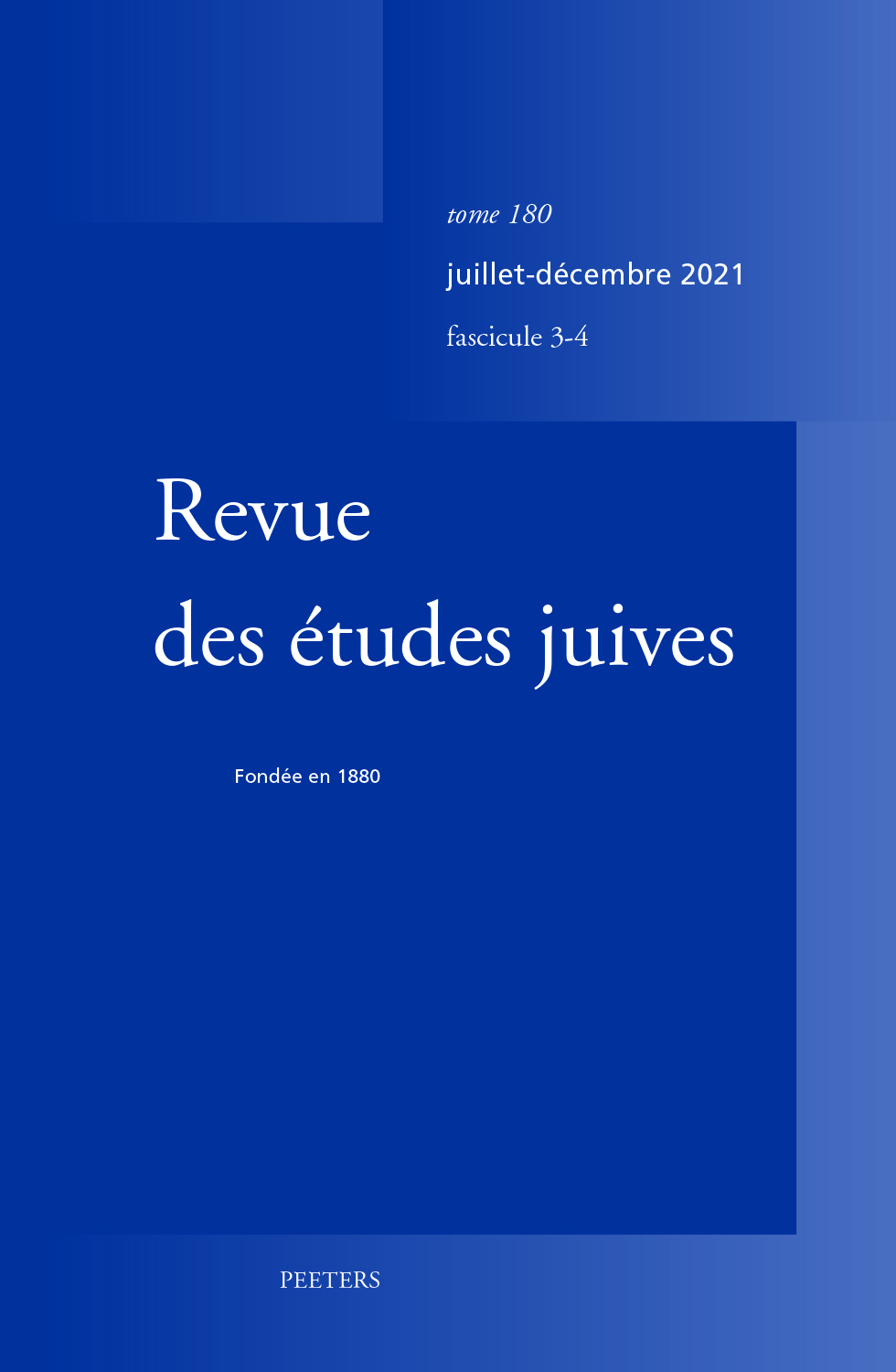 previous article in this issue previous article in this issue | next article in this issue  |

Preview first page |
Document Details : Title: Du Taytsch-khumesh au yiddish et retour Subtitle: Les traductions de la Bible en langue vulgaire (Moyen Âge - XVIIIe siècle) Author(s): BAUMGARTEN, Jean Journal: Revue des Études Juives Volume: 165 Issue: 1-2 Date: janvier-juin 2006 Pages: 191-227 DOI: 10.2143/REJ.165.1.2013880 Abstract : Dès les origines de la culture ashkénaze, les juifs traduisirent certains textes sacrés, dont la Bible, en yiddish. Dans les écoles, le maître lisait chaque verset, donnait une traduction littérale de chaque mot en yiddish (fartaytshung), puis il récapitulait le verset en associant les différents mots (khiber) et en ajoutant une courte interprétation (tsuzats). Dans cet article, nous analysons les différents types de traductions manuscrites ou imprimées en langue vernaculaire, depuis les gloses, les glossaires, les traductions littérales (Taytsh-Khumesh), jusqu’aux commentaires homilétiques. L’activité de traduction et de commentaire est à l’origine des traditions lexicographiques et grammaticales en langue juive vulgaire. From the beginning of the Ashkenazi culture, the Jews translated some sacred texts, especially the Jewish Bible, into Yiddish. In the school, the master used to read each verse, to give a literal translation of each word in Yiddish (fartaytshung), then he recapitulated the verse associating the words (khiber) and adding short commentaries (tsuzats). In this article, we study the different types of translations connected to the transmission and learning of the Bible, from the glosses, the glossaries, the literal translations (Taytsh-Khumesh) to the homiletic commentaries. The translations and the commentaries lead to the emergence of a lexicographical and grammatical tradition into vernacular. |
|


